Demolition SWMS: Ensuring Safety, Compliance, and Control in High-Risk Work
A guide to managing risks and ensuring compliance through effective demolition SWMS practices
Demolition is one of the most hazardous activities in the construction sector. Whether it involves dismantling old buildings, removing structural components, or clearing industrial sites, every stage of the process carries inherent dangers. From uncontrolled collapses and falling debris to hazardous materials like asbestos or lead, demolition work requires meticulous planning, disciplined execution, and absolute adherence to safety standards.
At the heart of this safety framework lies one crucial document, the demolition SWMS. A Safe Work Method Statement for demolition provides a structured, legally compliant, and practical approach to identifying hazards, managing risks, and ensuring every worker on site understands their role in maintaining safety.
In this article, we explore the importance of having a detailed demolition SWMS, its legal basis, what it should include, and how technology and best practices are transforming the way demolition safety is managed in Australia and beyond.
Understanding What a Demolition SWMS Is
A Safe Work Method Statement (SWMS) is a document required by law for all forms of high-risk construction work.
It describes in detail:
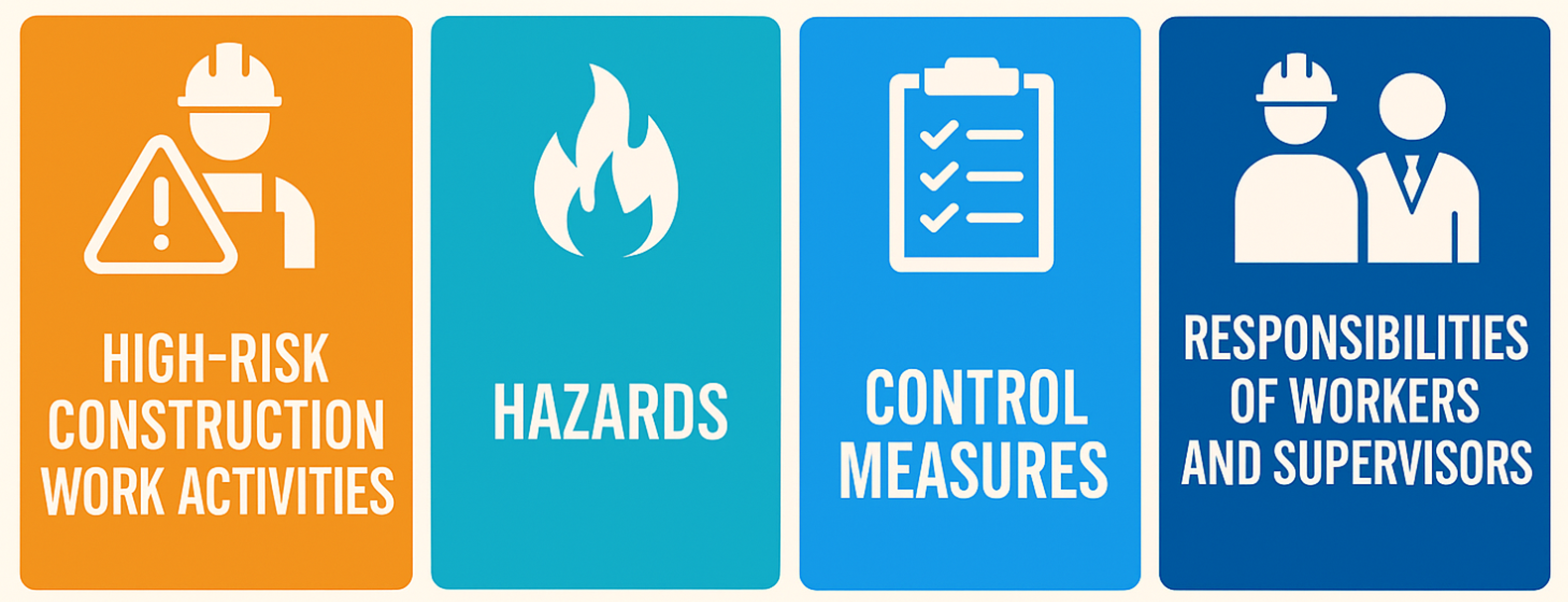
- The specific activities involved in a high-risk job
- The hazards associated with those activities
- The control measures to be implemented to reduce or eliminate the risks
- The responsibilities of supervisors and workers in ensuring safety
When applied to demolition, the demolition SWMS becomes one of the most critical planning tools for a site. It goes far beyond a simple checklist, it serves as a step-by-step guide for how demolition will be conducted safely, in compliance with legislation, and in coordination with all stakeholders.
In essence, it is the foundation upon which safe demolition practices are built. Without a clear SWMS, even experienced demolition teams can face uncontrolled hazards, miscommunication, or regulatory breaches that place lives, property, and reputation at risk.
Why Demolition Work Is Classified as High-Risk
Demolition is classified as a high-risk construction activity under the Work Health and Safety (WHS) Regulations. The risks associated with demolition are significantly greater than those found in most other construction tasks because they involve unpredictable structural behaviour, hidden hazards, and potentially unstable environments.
Common hazards in demolition work include:

- Structural collapse – resulting from weakened materials or incorrect sequencing of demolition.
- Falling debris or materials – endangering both workers and nearby pedestrians.
- Asbestos and hazardous materials – common in older buildings and requiring specialised removal.
- Noise, dust, and vibration exposure – which can lead to respiratory, hearing, and ergonomic issues.
- Plant and machinery operation – including excavators, cranes, and hydraulic shears, all of which require strict control.
- Electrical or gas services – that may not be properly isolated prior to work.
- Working at heights – especially when dismantling multi-level structures.
Because of these risks, it is not only good practice but a legal requirement to prepare and follow a demolition SWMS before any high-risk work begins.
Legal Framework and Requirements in Australia
In Australia, demolition work is governed primarily by the Work Health and Safety Act and the WHS Regulations, which are harmonised across most states and territories.
Clause 299 of the WHS Regulations specifies that any person conducting a business or undertaking (PCBU) must prepare a Safe Work Method Statement for demolition work that is classed as high-risk construction.
The demolition SWMS must:
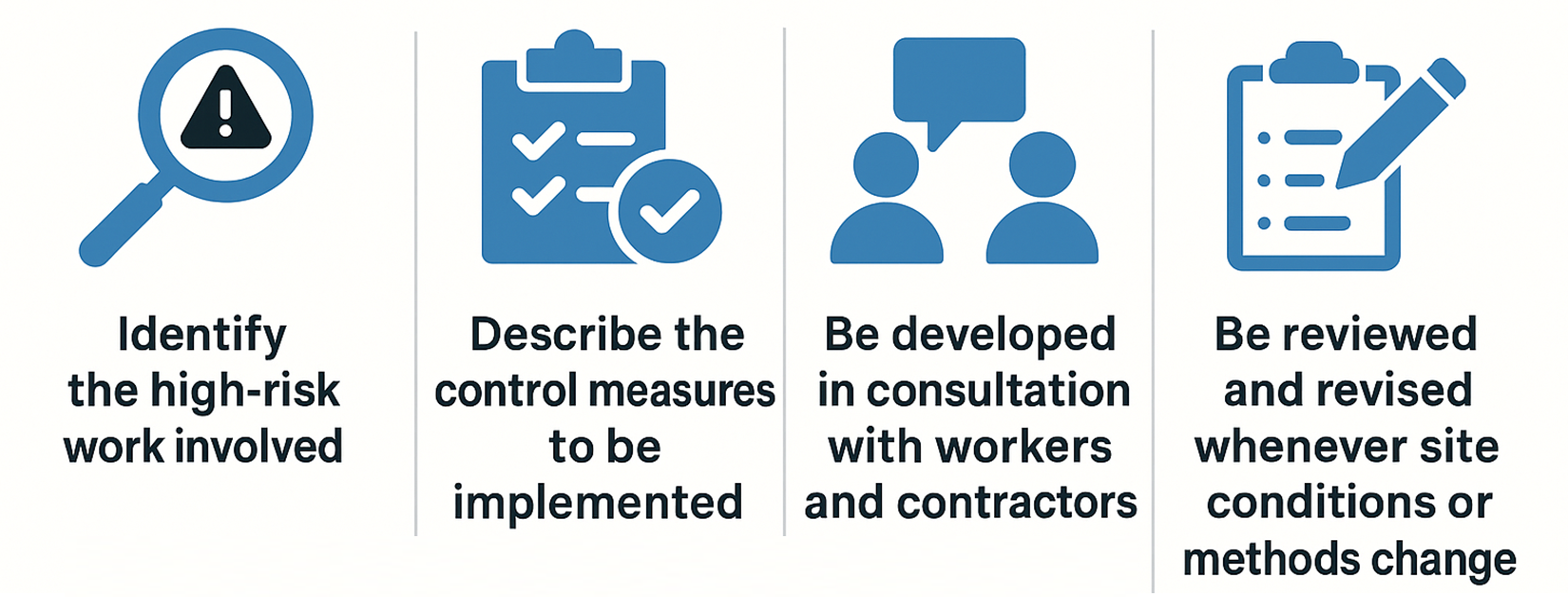
Failure to comply can lead to severe consequences including prosecution, fines, and site shutdowns. In extreme cases, it may also result in criminal liability if negligence leads to injury or death.
The document not only fulfils a legal requirement but also provides an auditable record that demonstrates the organisation’s commitment to safety and due diligence in managing high-risk activities.
Key Components of a Comprehensive Demolition SWMS
A robust demolition SWMS should be specific, practical, and tailored to the project at hand. While templates can serve as a starting point, every site presents unique hazards, and the SWMS must reflect these site-specific details.
The following elements should be included:

1. Scope of Work
A clear description of the demolition activities being undertaken, for example, “demolition of a two storey brick warehouse including roof removal, wall dismantling, and slab breakup.”
2. Sequence of Operations
Demolition must be carried out in a logical order to prevent uncontrolled collapse. The SWMS should detail the step by step sequence of work, specifying how each part of the structure will be safely dismantled.
3. Hazard Identification
Every foreseeable hazard must be documented. This may include structural instability, falling debris, exposure to hazardous substances, manual handling risks, or plant movement.
4. Risk Assessment
Each identified hazard should be assessed in terms of its likelihood and potential consequences. This allows prioritisation of the most serious risks.
5. Control Measures
This section outlines how risks will be managed. The hierarchy of controls, elimination, substitution, engineering, administrative, and personal protective equipment (PPE) should guide the selection of control measures.
For example:
- Eliminating risk by isolating and disconnecting utilities before work begins.
- Engineering controls like scaffolding, catch platforms, and exclusion zones.
- Administrative controls such as safe work procedures and supervision.
- PPE including helmets, gloves, respiratory protection, and high-visibility clothing.
6. Responsibilities
The SWMS must define who is responsible for implementing and monitoring each control. This includes supervisors, safety officers, plant operators, and general labourers.
7. Emergency Procedures
Plans for managing emergencies such as fires, collapses, gas leaks, or injuries must be detailed. Emergency contacts, evacuation routes, and first aid locations should be clearly communicated.
8. Review and Revision
The SWMS should include a process for reviewing and revising the document whenever there are changes in site conditions, work methods, or after an incident occurs.
Consultation and Worker Involvement
An effective demolition SWMS is not written in isolation by management. It must be developed in consultation with the people performing the work including site supervisors, operators, and labourers.
Worker engagement brings practical insights into potential hazards and effective controls. It also encourages ownership and accountability for safety on site.
Toolbox meetings, safety briefings, and sign-off sheets can be used to ensure that everyone understands and agrees to the procedures outlined in the SWMS. This collaborative approach not only enhances compliance but fosters a stronger safety culture across the project.
The Role of Engineering Controls and Technology
Modern demolition relies heavily on engineering and technology to enhance safety. Remote controlled machinery, drones, and computer modelling allow teams to assess risks and perform tasks with greater precision.
For example:
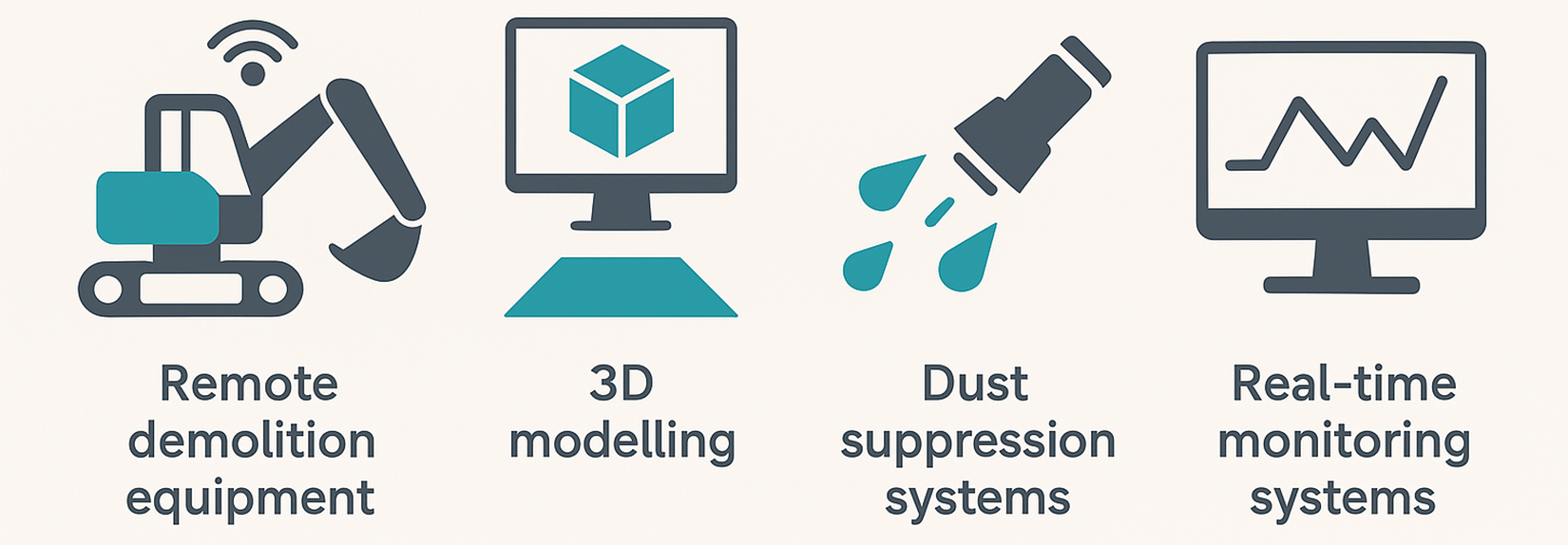
- Remote demolition equipment reduces worker exposure by allowing operators to control machinery from safe distances.
- 3D modelling helps engineers predict structural collapse patterns and plan safer demolition sequences.
- Dust suppression systems with automatic sensors maintain air quality standards.
- Real time monitoring systems track vibration, noise, and structural stability to prevent unexpected failures.
Integrating these tools with the demolition SWMS ensures that technological innovations are properly documented, monitored, and controlled.
The Importance of Regular Reviews and Updates
A demolition SWMS is not a one-off document. As conditions on site evolve, so too must the safety plan. Unexpected findings such as hidden asbestos, structural instability, or changes to project scope may require immediate revisions.
Regular reviews ensure that the SWMS remains a living, relevant document. Supervisors should verify that work is being carried out in accordance with the SWMS and that all workers are briefed on any amendments.
Safety audits, inspections, and post job evaluations are also valuable tools for continuous improvement. By learning from each project, organisations can refine their SWMS templates and strengthen overall safety management systems.
Digital Transformation in SWMS Management
The digital era has revolutionised the way demolition companies manage safety documentation.
Digital platforms allow teams to:
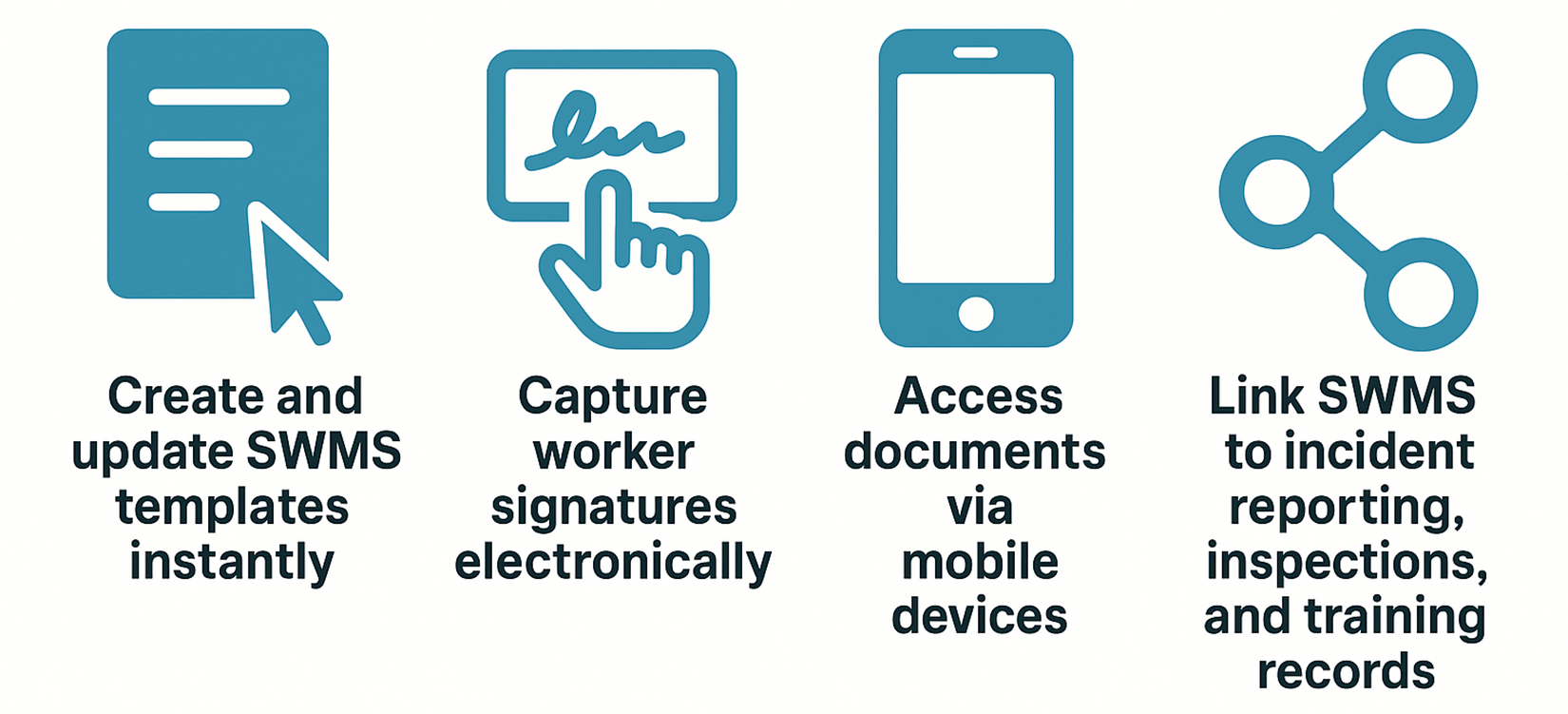
These innovations simplify record-keeping, reduce paperwork, and promote transparency. Workers can view the demolition SWMS directly on their devices, ensuring that critical information is always at hand.
For large or multi-site operations, cloud based systems enable safety managers to oversee compliance across multiple locations simultaneously.
Best Practices for Effective Implementation
To ensure a demolition SWMS delivers genuine safety benefits rather than becoming a formality, organisations should follow these best practices:
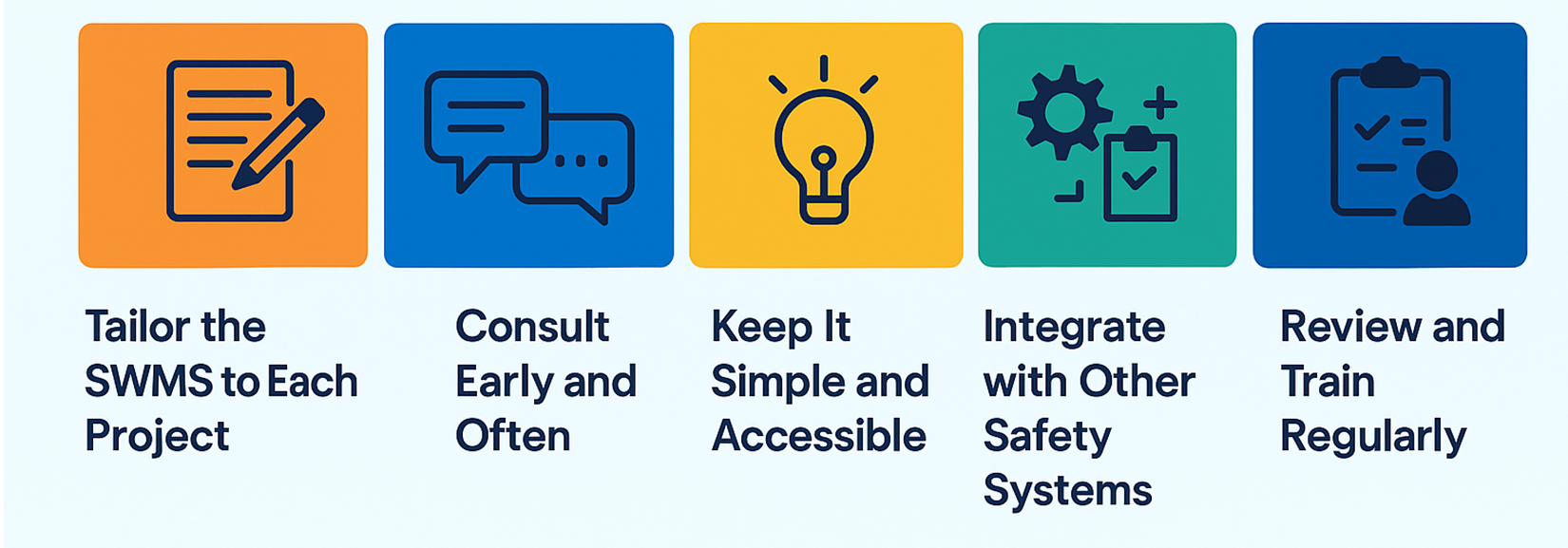
- Tailor the SWMS to Each Project
Avoid using generic templates. Every site and structure presents different risks that must be assessed individually.
- Consult Early and Often
Engage workers, engineers, and subcontractors during the planning phase. Their experience can reveal hazards that might otherwise be overlooked.
- Keep It Simple and Accessible
Use clear, plain language supported by diagrams or tables. Workers must be able to understand and follow the document without confusion.
- Integrate with Other Safety Systems
Align SWMS with risk assessments, permits to work, and emergency management plans. Consistency ensures a holistic safety framework.
- Review and Train Regularly
Conduct regular toolbox meetings to refresh awareness. Update the SWMS when new methods or equipment are introduced.
Case Study: Controlled Demolition in New South Wales
A demolition contractor in New South Wales was tasked with dismantling an ageing concrete car park located in a busy urban environment. The project posed multiple risks, including falling debris, limited access, and proximity to underground services.
The company developed a site-specific demolition SWMS that included:
- Real-time vibration monitoring to protect nearby structures.
- Designated exclusion zones with barriers and signage.
- A strict work at heights protocol supported by scaffold platforms.
- Daily pre-start briefings to review hazards and control measures.
- A digital sign-off process for workers and subcontractors.
The result was a seamless, incident free operation completed ahead of schedule. Regulators later praised the contractor for maintaining strong safety governance and documentation standards.
The Link Between SWMS and Safety Culture
Documents alone do not create safety people do. A well crafted SWMS is only as effective as the culture that supports it.
Leaders and supervisors play a vital role in reinforcing safety messages, encouraging reporting of hazards, and ensuring that procedures are followed consistently. By integrating SWMS discussions into daily work routines, safety becomes not a compliance burden but a shared value.
When workers understand why procedures exist and feel empowered to contribute to safety planning, engagement increases, and incidents decrease.
Conclusion
Demolition work demands precision, foresight, and accountability. The hazards are many, but with the right systems in place, they can be effectively managed.
A demolition SWMS provides the structured, legally compliant foundation for safe work practices. It defines how risks are identified, controlled, and monitored throughout each stage of the demolition process.
By combining robust documentation with consultation, training, and digital innovation, organisations can not only meet regulatory requirements but also foster a culture of safety excellence.
Ultimately, the goal is simple yet profound to ensure that every worker involved in demolition returns home safely each day, and every project is executed with integrity, compliance, and care.
Related Content
Join Our Newsletter
Receive expert insights, safety updates, and the latest updates in our services and apps. Stay ahead of workplace safety, compliance, and operational efficiency delivered straight to your inbox.

.png)
.png)
.png)
.png)
.png)
.png)
.png)
.png)
.png)
.png)